The Clan of Artūn Ūl
Chaga Dzeshēn at our lead,The Clan of Artūn Ūl is an organisation of six families who trace their descent from of the Conqueror, Artūn Ūl of the Itān peoples. The Conqueror, known as Chaga Dzeshēn by the Itān, unified the nine Itān tribes of the Howling Plains and led them to conquer the Kin Empire and Oases Confederate to the south. This conquest is known to posterity as the Tempest.
The Nine Tribes of the Hearthland thunder out south.
The children of the stone, descendants of the water,
Fold into the Hearth of Ozel the eternal.
Clan of Artūn Ūl eternal.
*Note on symbols: Any vowel with a bar over it means lengthen the vowel. So the word “cāt” would be pronounced like the English word “cat”, but with a long “a” (so like “caaat”).
Structure
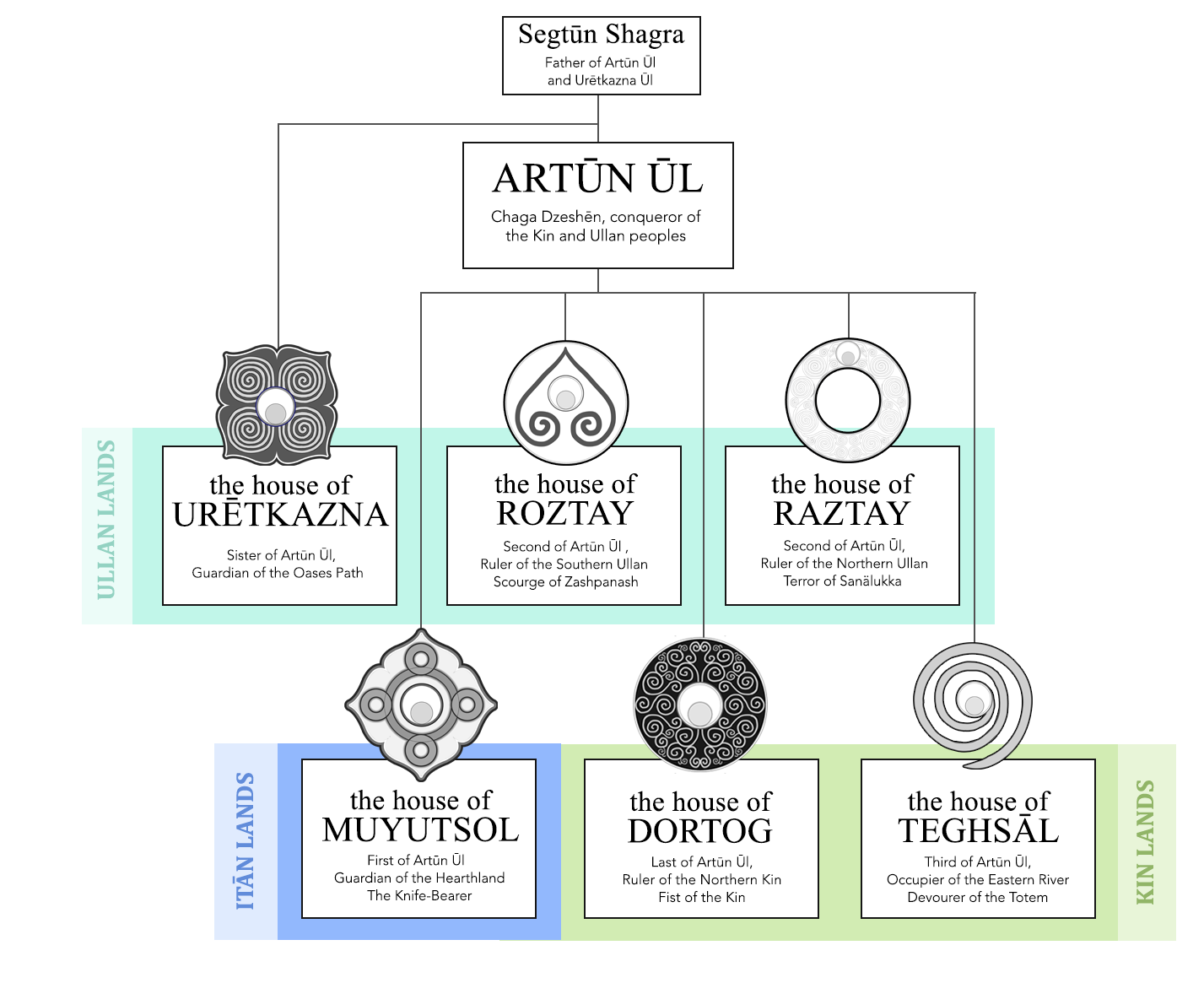
The Clan of Artūn Ūl consists of six descent lines, or houses. Each house rules a territory within the Empire. Five of the houses traces their descent from Artūn Ūl’s children, and one traces their descent from his sister Urētkazna.
A more accurate name for this clan would be the Clan of Segtūn Ūl (Artūn and Urētkazna’s father), but the most famous member of this clan is undoubtedly Artūn Ūl; the one who oversaw a vast territorial expansion of the Itān unlike anything seen in the history of the Shenraq. Artūn Ūl set up the dynastic foundations of this conquest empire, the Nation of Ozel, or the Tsoro Ozel. The six house of the Clan of Artūn Ūl are rulers of six different territories in the Nation of Ozel. Artūn Ūl’s will specified the extent of power for each house, and for four generations this will has been observed. On paper the Nation is run jointly by the six houses with the House of Muyutsol as the executive head. Overtime, in practice, each house has come to run their territory as they please.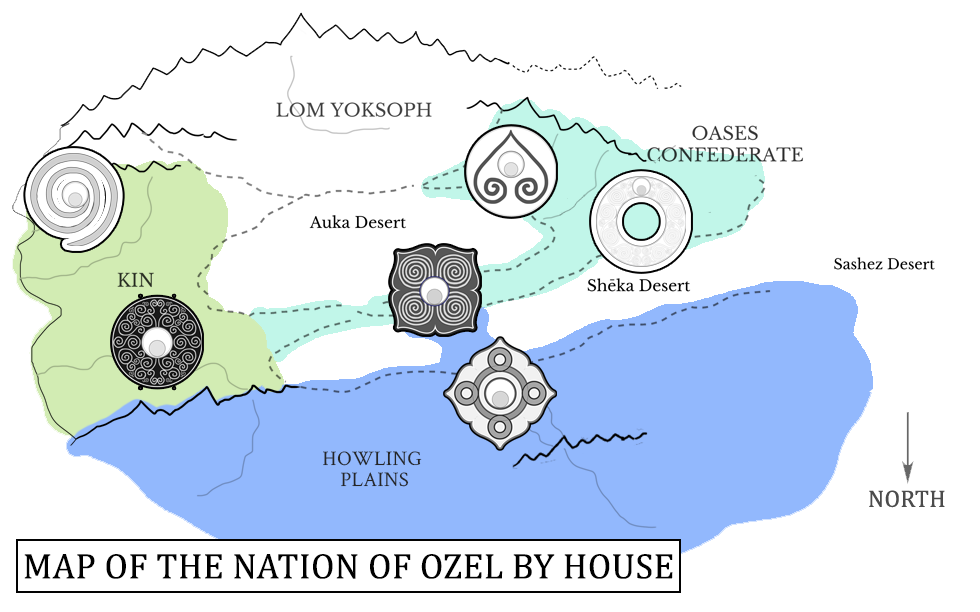
The House of Muyutsol
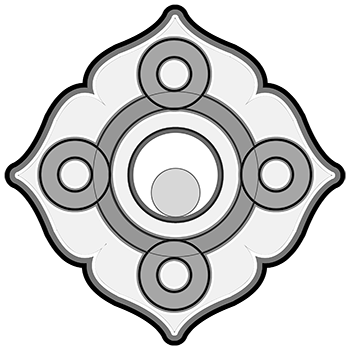
The House of Urētkazna
“As long as Urētkazna and her descendants protect the Oases Path from the ravages of those savage children, the Tsoro Ozel will stand.”
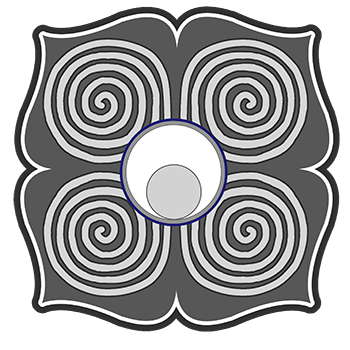
Because the Oases Path lie in the geographical centre of the Nation of Ozel, the House of Muyutsol is inf act very dependent on the House of Urētkazna for information, support, and access to the other territories. Thus far in the history of the Nation of Ozel, the house has remained true to the will of Artūn Ūl and supported the houses of his children, but this is not a guarantee set in stone.
The Houses of Roztay and Raztay
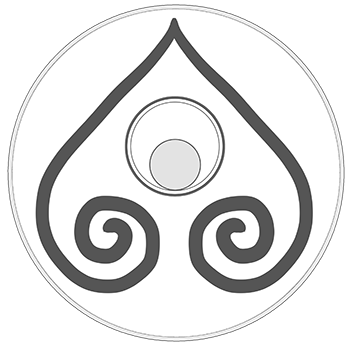
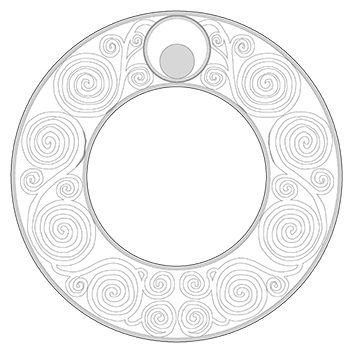
Heads of the Houses: The Houses of Roztay and Raztay are well known for their intrigue and intergenerational power-struggles. Many heads of houses die young under mysterious circumstances. The head of the House of Roztay in the year 1171 is Zānshak Khimtūn Dzokrkay Roztay=sol (age 28), and the House of Raztay is Gitatūl Nādshak Hirkan Raztay=sol (age 40).
The House of Dortog
One of their greatest assets is the imperial bureaucracy which they kept intact after the official conquest of the Kin Empire. The Kin imperial family was ended, but the bureaucracy continues to gather taxes and intelligence, enriching the House of Dortog as a result.
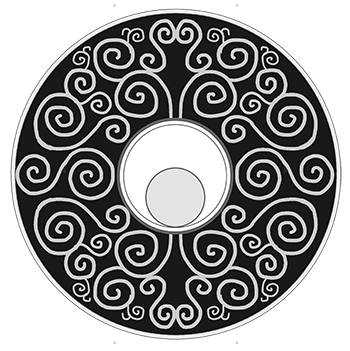
The House of Teghsāl
Shiami Im was devoured. It sighed as it faded. Our subjugation was complete.

A legend in circulation among the post-conquest Kin is that Teghsāl killed the Kin totem, an ancient underground lake fish, Shiami Im. The story goes that Teghsāl slaughtered her way through the sacred Origin Temple of the Kin, and discovered the sacred lake from which the Kin peoples were thought to have been borne into the world. The lake was home to the Kin totem. Teghsāl caught the fish and ate it raw. It is said that the crown of the House of Teghsāl is adorned with the scales of this legendary fish.
History
The conventional origins of The Tempest are attributed to the rise of the Conqueror Artūn Ūl, but I would in fact trace it further back to the Conqueror’s father, Segtūn Shagra. The role of Segtūn Shagra in the rise of his descendants' fortunes is laid out meticulously in the official history of the Nation of Ozeldūn, The Formal History of the Itān-Shagra. While some of it is undoubtedly embellishment by official court historians and the Chaga Dzeshēn’s descendants, it is clear he was indeed instrumental in setting the foundations of a unified Itān nation.The Clan of Artūn Ūl are part of the Shagra tribe of the Itān, and rose to prominence as he fought and united the nine great tribes. Artūn Ūl himself passed away before the conquest officially ended, but he left a will designating territories to his sister and his children to secure the future of his fledgling empire. The Tempest was brought to its conclusion by Artūn Ūl’s children, when the northern portion of the Kin Empire formally surrendered to his son Dortog Ūl.
Assets
In theory, everything in the Nation of Ozel collectively belongs to the Clan of Artūn UŪl. In practice, each house has their own assets depending on where they are located.| House | Territories | Other Assets |
|---|---|---|
House of Muyutsol
by Iyo Nishiura |
Shagra tribe lands | Executive authority: ability to call executive gathering, ability to call upon the army of the Nation of Ozel. Control over certain Itān shaman groups. |
House of Urētkazna
by Iyo Nishiura |
The Oases Pathway of the Ullan lands. | The ability to veto the House of Muyutsol. Access to the Guild of Waterways. |
House of Roztay
by Iyo Nishiura |
Ullan lands south of Sanälukka. | Can force any Ullan institution under its jurisdiction to obey any order made in the name of the house. Unfettered access to the Guild of Minerals, the Guild of Smiths, and the Guild of Engineers. |
House of Raztay
by Iyo Nishiura |
Ullan lands north of, and including, Sanälukka. | Can force any Ullan institution under its jurisdiction to obey any order made in the name of the house. Unfettered access to the Guild of Minerals, the Guild of Smiths, and the Guild of Letters, and the Guild of Stone Masonry, and the Guild of Glasswork. |
House of Teghsāl
by Iyo Nishiura |
Kin lands east of the Sinlam River. This territory is called the Ancient District by the Kin people, and is considered the spiritual and cultural heartland of the Kin. | The totem of the Kin peoples. |
House of Dortog
by Iyo Nishiura |
All Kin lands other than those occupied by the House of Teghsāl. | The Kin Imperial Bureaucracy. This includes the offices of taxation, infrastructure, espionage, a diplomatic core. |
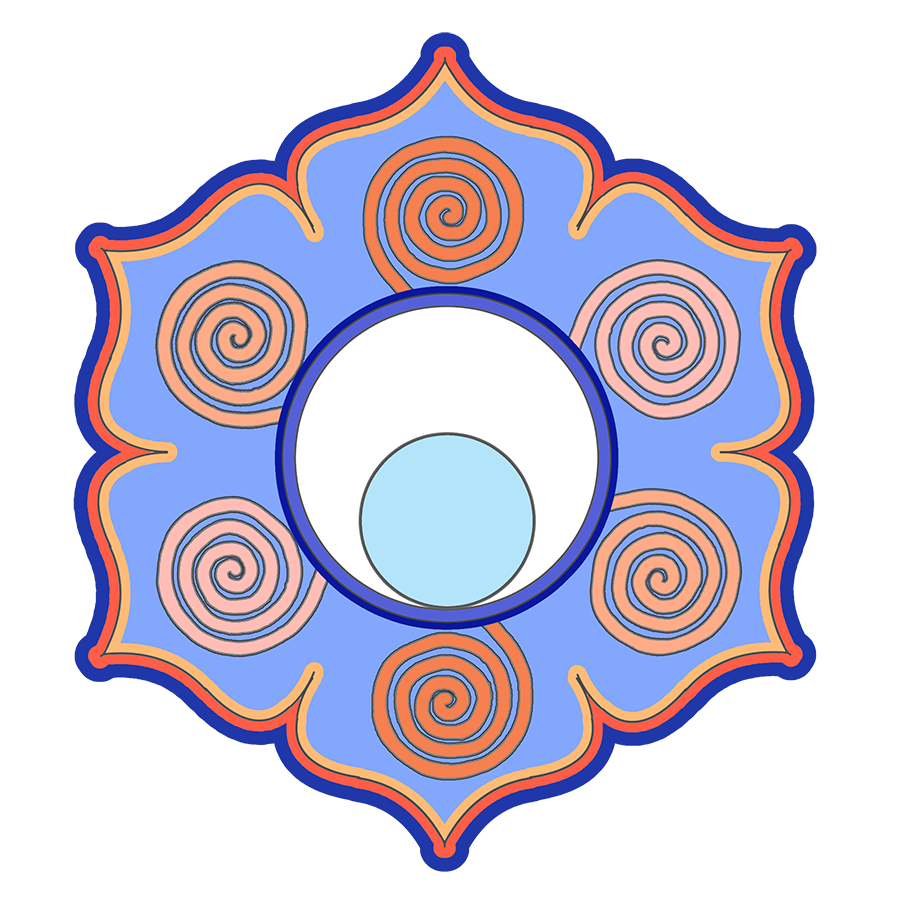
Emblem of the Clan of Artūn Ūl.
Artūn Ūl
CivilisationItān
Table of Contents
Terminology: System of Descent and Kinship
The Itān have a system of descent where most people in society are divided into two moieties: Hearthers (land owner and home maker) and Herders (owner of livestock who herd them on Hearther land). The biological children of a family are divided into one of the two groups at birth. The children who belong to the same moiety as the the parent is called a Direct Son/Daughter, while a child who belongs to the opposite moiety is just called a Son/Daughter. Artūn Ūl, a Hearther, calls his Hearther children Direct Son/Daughter, while he calls is Herder children Son/Daughter.Remove these ads. Join the Worldbuilders Guild

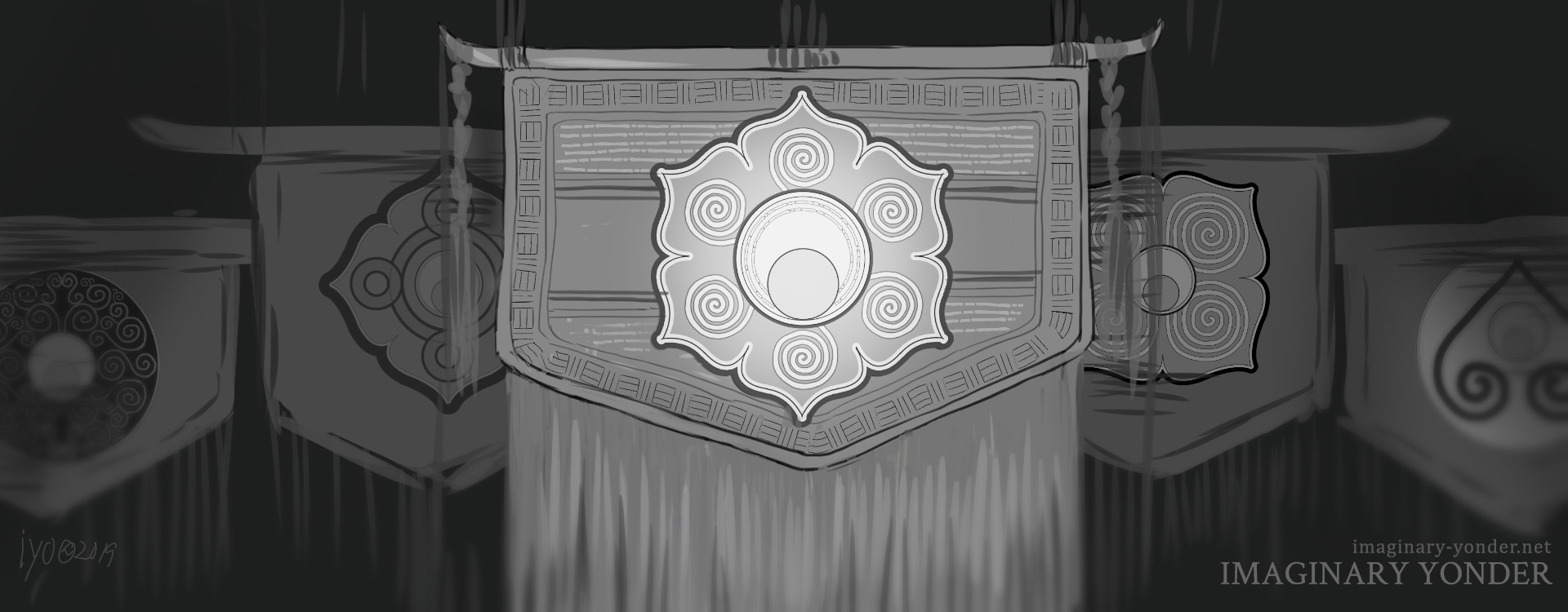







I really love all these custom sigils.
Thanks! It was fun to design them, some I might re-do in the future if I can come up with better designs